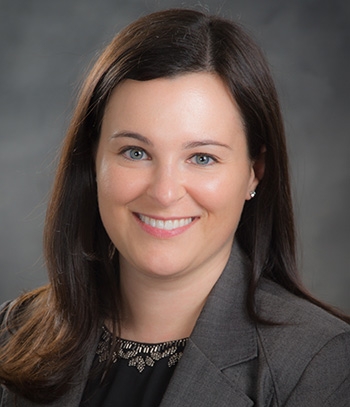Jill Brodsky ’02
PROGRAM: Leadership in Medicine
CURRENT POSITION: Pediatric endocrinologist, CareMount Medical, Poughkeepsie, N.Y
Each day Dr. Jill Brodsky ’02 is a warrior battling a powerful enemy. But as a pediatric endocrinologist at CareMount Medical in Poughkeepsie, N.Y., it comes with the territory.
A territory that has inspired her to do all she can to help kids with Type I and II diabetes, and other endocrine system associated challenges.
About 208,000 of Americans under age 20 are estimated to have diagnosed diabetes, according to the American Diabetes Association. Approximately 0.25% of that population and approximately 1.25 million American children and adults have Type 1.
“Type I diabetes is an autoimmune disease so for those children, it just happens to them,” Brodsky said. “It would be overwhelming for any adult to deal with, let alone an eight-year-old.”
The question that she constantly chips away at is: How can we prevent it from even happening and how can we improve the lives of people who already have it?
“We are very technology focused,” she said. “Once we can get people to utilize continuous glucose monitors and insulin pumps, it helps increase their quality of life because it decreases a lot of the burden that comes with the disease. But it’s still a 24-hour-a-day job for them.”
Type II diabetes is on the rise in children and requires additional considerations on the part of the doctor and patient.
“Type II is directly impacted by lifestyle,” Brodsky said. “That is a different challenge than Type I because it involves trying to figure out how to motivate an entire family to change. A lot of times not just the child is overweight and obese, but the parents too.”
But both versions of the disease can have devastating side effects.
“It leads to complications such as blindness, kidney failure, early onset cardiovascular disease, heart attack, stroke, poor circulation,” Brodsky explained. “This is something that can start happening to these children in their 20s, 30s and 40s.”
Through a combined program, Brodsky was able to complete her undergraduate and medical school program at Union in seven years, linked with Albany Medical School. She followed this with residencies in both pediatrics and pediatric endocrinology at Yale Children’s Hospital and the Children’s Hospital of Philadelphia, respectively.
When she was a medical student, one of the pediatric endocrinologists was looking for volunteers to work at a camp for children with diabetes and since Brodsky was a summer camp enthusiast, she happily jumped at the chance.
“I absolutely fell in love with the kids and I thought diabetes was very interesting because it’s the same disease but it’s very different in each individual,” she said. “You really have to figure out how to make things work for that particular patient so that they can be motivated to have good control; so that was a really significant experience for me.”
Brodsky’s mother was a researcher so growing up she would go in late at night and on weekends to tend to her experiments.
“She would bring me with her, set me up at her lab bench, and I would play with test-tubes with water and do my own experiments,” she said. “I think being exposed and encouraged by my parents to pursue math and science was huge for me; that was the beginnings of it.”
On June 3, Brodsky was honored with the distinguished Founder’s Award by the Juvenile Diabetes Foundation. Prior to this honor, she also was named one of the 40 Under 40 by the Dutchess County Regional Chamber of Commerce.
“I teach children with chronic illness the importance of taking care of themselves and try to give them the tools to be able to succeed as adults,” she said. “If I do my job well, I’m setting them up for a trajectory of improved health, decreased complications and success for the rest of their lives.”
“I take that responsibility very seriously. My hope is that we will be able to change a lot of the complication rates and issues that endocrine patients experience as they get older. We just need to work on teaching them well now as pediatric patients.”

